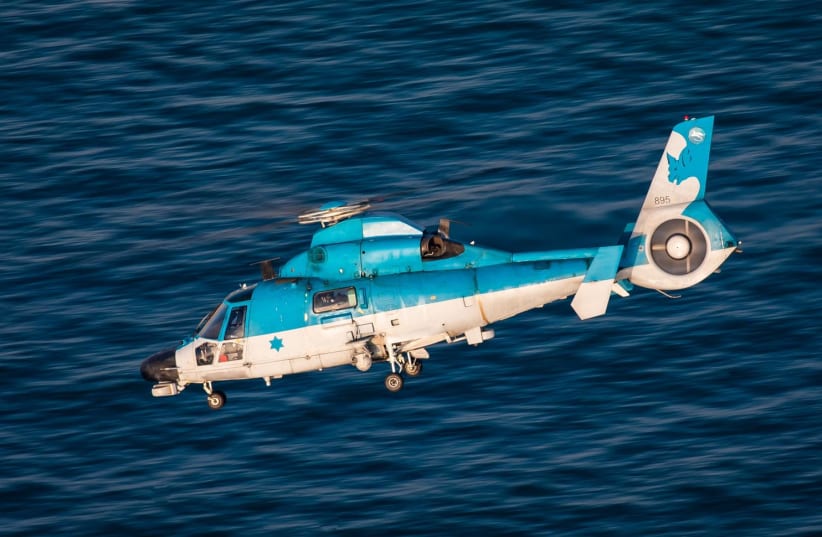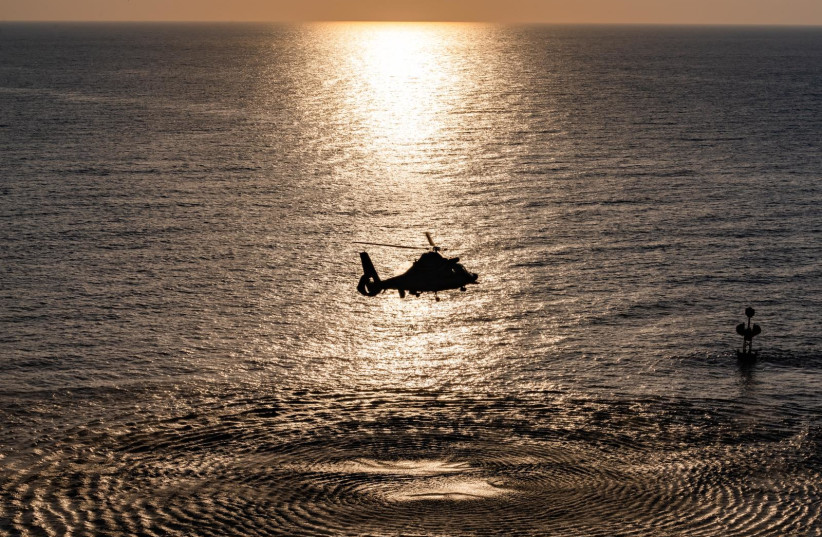The second interim report into the deadly helicopter crash last month off the coast of Haifa has determined that the cause was a broken blade in the left engine that caused a fire that also damaged the right engine and caused the helicopter to crash.
Two IDF pilots, Lt.-Col Erez Sachaini and Maj. Chen Fogel, died after their helicopter- an Atalef AS565 Panther − went down after a fire broke out in the left engine and crashed off the coast. The third crew member, naval officer Cpt. Ron Birman survived.
The findings of the interim report were given to Israeli Air Force Head Maj.-Gen. Amikam Norkin on Thursday and to the families of the crew on Friday morning.
Norkin described the two killed as “experienced pilots and senior commanders in the corps, who performed many training and operational activities and accumulated thousands of flight hours, held command and combat roles and contributed greatly to the security of the State of Israel.”
An inspection of the engine by the helicopter’s manufacturer in France, Airbus Helicopters, found that the technical failure of the left engine was due to corrosion of an internal component, which led to a fatigue crack developing in the engine turbine blade that expanded during flight and eventually cracked and broke off within the motor, causing the fire.
The reason for the corrosion is still being examined by Eurocopter, but the location of the corrosion was deep within the motor and maintenance was therefore not part of routine checks.
Israeli Air Force chief of operations Brig.-Gen. Amir Lazar told reporters that “according to the manufacturer, this is the first time that such a malfunction has occurred in the world,” he said, adding that “this was a very fast, very violent, very irregular incident.”
The AS565 Panther is flown by at least 15 different nations including the United States, Brazil, China, France, South Korea, Taiwan and the United Kingdom.
Inspection and repair of the engine’s internal components are done only by the manufacturer; according to the military, the engine was last inspected by the manufacturer in 2017 in accordance with regulations stipulating that it should be inspected in France after 1,650 flight hours.
Since its last inspection, the helicopter had flown fewer than 1,400 hours and had undergone a “comprehensive” inspection in Israel and found to be in good condition.
THE MILITARY investigation found that the crew dealt with a “complex” emergency for about two minutes before crashing into the sea.
The crew worked as a team to diagnose and respond to changes in the helicopter, the military said.
“The crew dealt with the malfunction and a sequence of events in the air over a short period of time, calmly and as a team, and their actions resulted in the helicopter hitting the water in a way that enabled Captain Ron Birman to be rescued,” IAF Chief Norkin said.
The investigation found that the pilots did not turn off the engine before turning on fire extinguishers, a move that reduced the efficiency of the fire extinguishing system.
When the helicopter hit the water, it overturned a few seconds later.
Lazar said that the helicopter hit with such intensity that the right buoyancy buoy exploded, the tail assembly broke, the naval patrol officer’s door opened and the helicopter began to sink.
The intensity of the crash also left the pilots unconscious, and no actions were identified that indicated that they had attempted to escape from the helicopter.
The investigation, therefore, determined that the cause of death of the two pilots was by drowning.
Within eight minutes of losing contact with the helicopter, rescue operations by the Air Force, Navy, and the Israel Police began.
While in the water, Birman called the squadron commander from his telephone and told him that they had made an emergency landing at sea and he had been unable to rescue the other crew members.Though Birman was rescued alive shortly after forces arrived, Lazar said that due to the condition of the helicopter, the pilots could not be rescued. They were pulled from the wreckage an hour later.
After Norkin received the findings and the investigating committee’s recommendations for the continuation of the inspection process, he ordered that the fleet be checked for similar issues before a gradual return to service.
“Since the accident, there has been a cross-continental effort, with no price limit, with a variety of consultants, civilian companies, test pilots, and the manufacturer in France to understand in depth the circumstances of the accident,” said Norkin.
“The Ataleph is a helicopter that has flown for many years and its engines are common across the world,” Norkin said. “We will continue to learn, improve and do as much as possible to prevent a recurrence of such an accident.”
Israel bought five AS565 Atalefs, a medium-weight multipurpose twin-engine helicopter, in 1996. They are used by the Navy for a variety of missions including search and rescue, and combat support.

